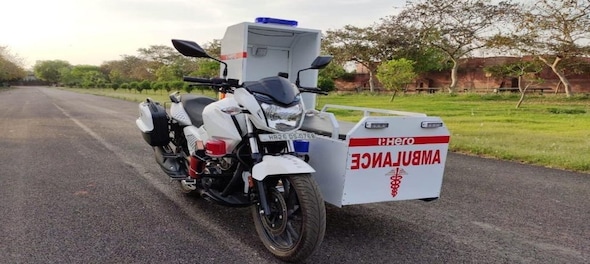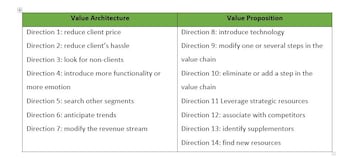
The unprecedented Corona Lockdown has changed the face of the Indian economy and companies are leveraging Innovation to face the “new normal”. These innovations range widely — from inexpensive alternatives in form of 3D printed Rs 20 Face-shields; new partnerships such as Uber-Big Basket tie-up to deliver essential products; or tech-driven contactless services like diagnostic robots at Apollo Hospital, Bangalore.
On one hand, it is heartening to see widespread acceptance of innovation as the tool to spur the next growth wave. On the other hand, one worries that Indians are often seen as champions of “Frugal” or stripped-down innovation, frequently missing the mark on quality or last-mile-connectivity. When the primary focus is on delivering the low-cost product that uses minimum raw material, businesses disregard that Innovation is both a process and an outcome. The “jugaad” mentality forces one to ignore the robustness of the innovation process.
The typical process for any Innovation starts with defining the problem, brainstorming to generate a multitude of ideas, filtering the right ideas, designing creative solutions and testing the product in market-simulations with real customers. In case the customers love the product, the product is mass-produced.
Unfortunately, the Innovation process is neither simple nor straightforward. It is iterative — the design team must often come back to the drawing board to repair flaws, to address gaps and to enhance yield. Therefore, it is critical we develop our individual and team capabilities to follow a structured process for innovation. This would allow us to cater to customer’s needs, adhere to requisite quality standards and operate within current supply-chain and manpower restrictions.
A critical piece within the innovation process is anticipating challenges related to production and product-acceptance. The following two tools present a practical how-to for filtering the right ideas and building a robust business plan.
Design Thinking: Solving Problems Creatively
“Design thinking” is a technique for creative problem-solving. Broadly, it helps find answers for hard-to-solve or ill-defined problems. The typical process starts from defining a problem (who, what, when, why and how) and generating a mountain of ideas as possible solutions. For example, our question is “How to ensure customer happiness at a dine-in restaurant located in the commercial district while serving them in a contactless environment?”
During brainstorming, a team can come up with many ideas — free face-screens for customers, barbeque at the table, buffet service, contactless e-orders and delivery through robots and automated trolleys. One starts by pooling similar ideas in groups and then filtering solutions by asking — is it “desirable” by the customer? Is it technologically “feasible”? Can this be a “viable” business model?
One can experiment with IDEO’s design thinking framework — a handy tool that “integrates the needs of people, the possibilities of technology, and the requirements for business success”.
Let us assume that the design team agrees on a ‘lunch buffet service on business days’ and ‘contactless drink orders over the phone’ as possible ideas. Both ideas seem technologically feasible and acceptable by key stakeholders — customers and cooking/serving staff. Now, how to ensure that this is a “viable” business model?
Odyssey 3.14: Business Model Innovation
We can use Odyssey 3.14 to ensure the robustness of the business model. It is a hands-on tool to strengthen both the technological “feasibility” and the financial “viability”. In their latest book, Hélène Musikas and Laurence Lehmann-Ortega, (both visiting faculty at the premier business school HEC, Paris) elaborate that there are 3 Pillars of any Business Model — Value Proposition, Value Architecture and Profit Equation.
This first pillar “Value proposition” describes the offer or product as presented to the client and the price — in our case, a lunch buffet service for business clients. The Value Architecture is meant to focus on the "how” of what a company develops and delivers to the client. This would cover the entire value chain — from the buffet menu, cooking and serving staff, a marketing campaign to waste disposal.
The third pillar which is “Profit Equation” is the financial translation of the two previous pillars of the business model. It explains the source of profitability by associating Turnover (in relation to price and volumes), costs and capital employed. We would examine whether enough revenue can be generated with an extended lunch (4 to 5 hours) buffet service where only ten customers can be attended at a time while maintaining social-distancing norms. Also, this would reduce our burden in capital employed as the lunch menu is a focused offering and inventory would be limited.
The book presents 50 case studies, where the framework explores 14 Directions — seven in Value Proposition and another seven in Value architecture (see figure below).

Now it is your turn to structure the innovation process, experiment with design thinking and redesign your business model! Let the innovation engine come alive to regenerate your business in a sustainable manner.
-Anubhuti Gupta is an independent expert in People Development and has taught at IIM Bangalore and HEC Paris. The views expressed are personal
First Published: May 16, 2020 9:29 AM IST
Check out our in-depth Market Coverage, Business News & get real-time Stock Market Updates on CNBC-TV18. Also, Watch our channels CNBC-TV18, CNBC Awaaz and CNBC Bajar Live on-the-go!


Lok Sabha elections 2024: Seats to date, all you need to know about third phase of voting
May 6, 2024 4:49 PM
Concerns on low voter turnout a "myth"; absolute number of voters correct way to analyse: Report
May 6, 2024 2:57 PM
Haryana Lok Sabha elections 2024: A look at JJP candidates
May 6, 2024 2:26 PM
Yadav family members in focus in third phase of Lok Sabha polls in Uttar Pradesh
May 6, 2024 12:59 PM

